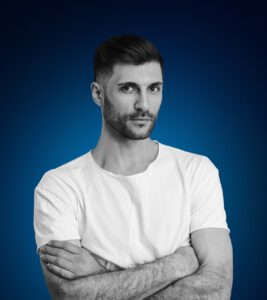
Introduction
Hoek van Holland is a beautiful beach destination known for its scenic beaches that are super wide. However, like many popular spots, the issue of litter and garbage on the beach has become a concern. To address this problem and encourage community engagement, we are excited to introduce our new mobile application. This innovative solution aims to motivate people to clean the beach at Hoek van Holland while providing them with useful tools and rewards. In this post, we will delve into the details of our project, explaining our mission, how the application works, and it’s features.
The Project
Our project was born out of a desire to tackle the growing problem of beach litter at Hoek van Holland. This is a problem we recognise not only in the Netherlands, but all around the world. There are several organisations trying to tackle this problem, such as The Ocean Cleanup. This is a company focussing on tackling this problem at the source. They’re working on the pollution in rivers, which are bringing their litter to the ocean. We recognised the need for an accessible solution that would encourage people walking on the beach to actively participate in cleaning it. Since the beaches are a problem by itself, and governments are putting a lot of money in cleaning the beaches after it’s been polluted by visitors.By developing a mobile application, we aimed to create a platform to bring together participants, beach-clubs and other stakeholders. This platform became a mobile app called CleanWave.

Our Mission
At the core of our project is a simple yet powerful mission: to make a positive impact on cleaning the beach of Hoek van Holland. We believe that by bringing together the efforts of different beachgoers, we can foster a cleaner and more sustainable environment. Through the mobile application, we aim to inspire individuals and families to take responsibility for the beach they love and empower them to contribute to its preservation.
Features
Our mobile application comes equipped with several features designed to enhance the beach cleaning experience. Here are some noteworthy features:
-
Garbage Collection: Users can easily collect trash from the beach using bags provided by grondstofjutters.nl, a local organisation dedicated to environmental conservation. These specially designed Juttas are available for users to pick up at beach-clubs and use for collecting the garbage they find.
-
Garbage Patch Detection Using AI: Our application employs advanced AI technology to identify potential garbage patches on the beach. By implementing a neural network algorithm the app helps users locate areas where there is more pollution. We’re using Datasets from years in the past with locations where pollution was found.
-
Daily Challenges: To keep users motivated and engaged, we have incorporated daily challenges into the application. These challenges encourage individuals to clean a certain area or collect a specific amount of garbage. Completing these challenges unlocks rewards and badges, further motivating users to actively clean the beach.
-
Rewards System: We understand the importance of recognising and appreciating users’ efforts. For every piece of garbage collected and handed in, users receive rewards that can be redeemed at the local beach clubs. These rewards can range from discounts on food and beverages to free items on the menu, giving them a sense of accomplishment and promoting a circular economy within the beach-club community.

Tech Stack
For our mobile application we used 3 separate components. We’ve used React Native for the front-end of our mobile app. For the back-end we’ve used Firebase. Firebase is a tech-stack at itself for back-end use. You can manage a fully relational database, but you’re also able to run Node.js functions in the background.
For the interesting part of our application we’ve used ML5. A javascript library that helps implementing all kinds of Machine Learning components into your Javascript application. We’ve used a Neural Network that functions as a Regression model. This regression model can predict Longitude and Latitude data for our litter predictions on our map.

How It Works
Our mobile application provides users with a user-friendly interface that makes beach cleaning accessible and enjoyable. Here’s how it works:
-
Grab a bag (Juttas): Arriving at the beach, you will have the opportunity to grab a Juttas (bag) from Grondstofjutters. These bags are designed to grab litter of the beaches.
- Daily challenges or locations: Take a look at the apps’ interface and take on a daily challenge, or view the latest locations where pollution is predicted.
-
Collect litter: Make your walk like you usually do, but stop by the litter and collect it in your Juttas (or other bag).
-
Return it: Return the collected garbage to the closest beach-club located on the map.
-
Grab a coffee: Verify your collections at the beach-club and enjoy your rewards given. Grab a coffee or something else from their menu based on your credit.
Conclusion
Our mobile application represents a significant step forward in addressing the issue of beach litter at Hoek van Holland. By combining user-friendly features, AI technology, and collaboration with local organisations, we have created a platform that motivates individuals to actively contribute to the cleanliness and preservation of their beloved beach. Together, we can make a real difference and enjoy a cleaner, more sustainable beach at Hoek van Holland. Take a look at the application CleanWave.

